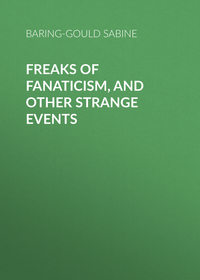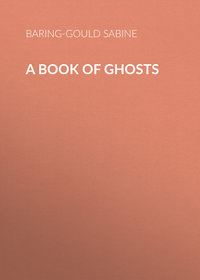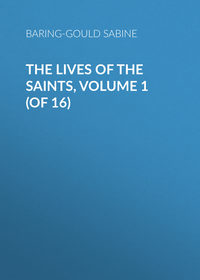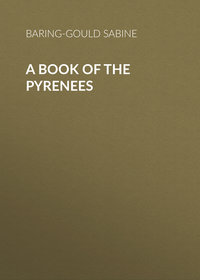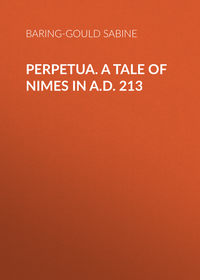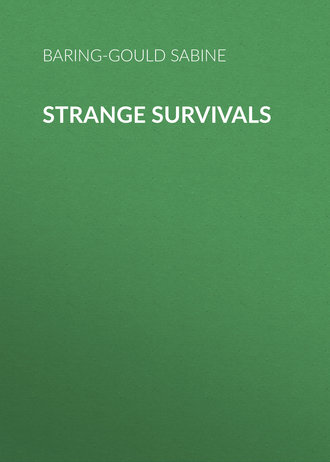 полная версия
полная версияStrange Survivals
The sheaf of corn, which is fastened in Norway and Denmark to the gable of a house, is now supposed to be an offering to the birds; originally, it was a feed for the pale horse of the death-god Woden. And now we see the origin of the bush which is set up when a roof is completed, and also of the floral hip-knobs of Gothic buildings. Both are relics of the oblation affixed to the gable made to the horse of Woden, – corn, or hay, or grass; and this is also the origin of the “palms,” poles with bouquets at the top, erected in the Black Forest to keep off lightning.
A little while ago the writer was at Pilsen in Bohemia, and was struck with the gables in the great square. Each terminated in a vase of flowers or fruit, or some floral ornament, except only the Town Hall, which had three gables, each surmounted by spikes of iron, and spikes stood between each gable, and each spike transfixed a ball. The floral representations are far-away remembrances of the bunch of corn and hay offered to Woden’s horse, but the balls on the spikes recall the human skulls set up to his honour. That the skulls were offerings to a god was forgotten, and those set up were the heads of criminals. The Rath-Haus had them, not the private houses, because only the town council had a right to execute.
Throughout the Middle Ages, among ourselves down to the end of last century, heads of traitors and criminals were thus stuck up on spikes over city gates, and town halls, and castles. Those executed by justice were treated according to immemorial and heathen custom. A new meaning was given to the loathsome exhibition. It deterred from treason and crime. Nevertheless, our Christian mediæval rulers simply carried out the old custom of offering the heads to Odin, by setting them up above the gables. Skulls and decaying heads came to be so thoroughly regarded as a part – an integral ornament of a gate or a gable – that when architects built renaissance houses and gateways, they set up stone balls on them as substitutes for the heads which were no more available. A lord with power of life and death put heads over his gate; it was the sign that he enjoyed capital rights. The stone balls on lodge gates are their lineal descendants. Some manors were without capital jurisdiction, and the lords of these had no right to set up heads, or sham heads, or stone balls. If they did so they were like the modern parvenu who assumes armorial bearings to which he has no heraldic right.
When the writer was a boy, he lived for some years in a town of the south of France, where was a house that had been built by one of the executioners in the Reign of Terror. This man had adorned the pediment of his house with stone balls, and the popular belief was that each ball represented a human head that he had guillotined. Whether it was so or not, we cannot say. It was, perhaps, an unfounded belief, but the people were right in holding that the stone balls used as architectural adornments were the representatives of human heads.
In the Pilsen market-place, it was remarkable that only the Town Hall had balls on it, and balls in the place where there had previously been spiked heads. No private citizen ventured to assume the cognisance of right of life and death.
At Chartres all the pinnacles of the cathedral are surmounted by carved human heads.
In the farmhouse of Tresmarrow in Cornwall, in a niche, is preserved a human skull. Why it is there, no one knows. It has been several times buried, but, whenever buried, noises ensue which disturb the household, and the skull is disinterred and replaced in its niche. Formerly it occupied the gable head.
As already said, these heads were regarded as oracular. In one of Grimm’s “Folk-Tales” a King marries a chamber-maid by mistake for her mistress, a princess, who is obliged to keep geese. The princess’s horse is killed, and its head set up over the city gate. When the princess drives her geese out of the town she addresses the head, and the head answers and counsels her. So in Norse mythology Odin had a human head embalmed, and had recourse to it for advice when in any doubt. In the tale of the Greek King and Douban, the Physician, in the Arabian Nights’ Tales, the physician’s head, when he is decapitated, is set on a vase, where it rebukes the King. Friar Bacon’s brazen head whereby he conjured is a reminiscence of these oracular heads.
In one of the Icelandic Sagas, the gable ends whistle in the wind, and give oracles according to the tone or manner in which they pipe.
The busts that occupy niches in Italian buildings are far-off remembrances of the real human heads which adorned the fronts of the wigwams of our savage ancestors. So, also, as already said, are the head corbels of Norman buildings.
On old Devonshire houses, the first ridge-tile on the main gable was very commonly moulded to represent a horse and his rider. The popular explanation is that these tiles were put up over the houses where Charles I. slept; but this is a mistake; they are found where Charles I. never was.
At one time they were pretty common. Now some remain, but only a few, at Plymouth, Exeter, Totnes, Tavistock, and at East Looe, and Padstow, in Cornwall. One at Truro represents a horse bearing skins on the back, and is so contrived as to whistle in the wind. None are earlier than the seventeenth century, yet they certainly take the place of more ancient figures, and they carry us back in thought to the period when the horse or horse-head was the ornament proper to every gable. These little tile-horses and men are of divine ancestry. They trace back to Wuotan and his hell-horse.11
The historical existence of the leaders Hengest and Horsa, who led the Anglo-Saxons to the conquest of Britain, has long been disputed. There probably never were such personages. What is more likely is that they were the horse-headed beams of the chief’s house of the invading tribe. Both names indicate horses. When the Norsemen moved their quarters, they took the main beams of their dwellings with them, and they took omens from these beams, when they warped or whistled in wet and wind. The first settlers in Iceland threw their house-beams into the sea off Norway, and colonised at the spot where they were washed ashore on the black volcanic sands of Iceland.
The white horse in the arms of Kent, the white horse on the Hanovarian coat, the white horses on the chalk downs throughout Wessex, have all reference to Woden and his grey hell-horse. The greatest respect was paid to the main principals of the roof with their horse-heads. We can understand how that when the old house in the market-place at Cologne was rebuilt, the old heads were retained; and when the original skulls decayed, they were replaced with painted wooden imitations; just as in the Norman churches the skull-like corbels of stone, and in Gothic churches the monstrous gaping gurgoyles, and on our Elizabethan mansions the stone balls, also the figure-heads on ships, all trace back to real heads of sacrificed beasts and men.
In 1877 it was found necessary to pull down the spire terminating the bell-turret surmounting the western gable of St. Cuthbert’s Church, Elsdon, Northumberland. In the spire, immediately over the bell, was discovered a small chamber, without any opening to it, and within this, nearly filling the cavity, were three horse-heads, or rather skulls, piled in a triangular form, the jaws uppermost. The receptacle had been made for them with some care, and then they had been walled up in it.12
On the tower of the Church of Sorau in Lusatia are two heads, one is that of a woman, the other that of a horse. The story told to account for them is this. A girl was drawing water at the fountain in the market-place, when a horse, filled with madness, rushed at her. She fled round the market-place pursued by the horse, which was gaining on her, when, seeing the door into the tower open, she ran in, and up the winding stair. Arrived at the top, she stopped to breathe, when, to her dismay, she heard the clatter of the horse’s hoofs on the steps; the creature was pursuing her up the tower. In her terror she leaped from the bell window, and the horse leaped after her. Both were dashed to pieces on the pavement. The heads were set up on stone as a memorial of the event.
In 1429 the town of Budissin was besieged by the Hussites. The town notary, Peter Prichwitz, promised to open the gates to the investing forces, but his treachery was discovered in time, and the traitor was executed on December 6th, in the market-place, and when he had been drawn and quartered, his quarters were set up over the bastions, and his head carved in stone above the city gate, and this remains to the present day.
Here we have two instances, and many more could be adduced, of these carved heads being made to represent the heads of certain persons who have died violent deaths.
The first instance is peculiarly interesting. The story, however, as little explains the figures as does that of Richmod of Adocht at Cologne. There is a great deal of evidence to show that till a late period, when a lofty tower or spire was erected, human or animal victims were cast from the top, to ensure the erection from being struck by lightning. The woman and the horse at Sorau had been thus offered. We know that this was a mode of sacrifice to Odin. Victims to him were flung down precipices.
In North Germany, at the close of the last century, on St. James’s day, it was customary to throw a goat with gilt horns and adorned with ribbons from the top of a church or town hall tower. At Ypres, on the second Wednesday in Lent, cats were flung down from the tower. Abraham à Santa Clara says that three illustrious Italian families, those of Torelli, Pieschi, and Gonzaga, have white ladies who appear before death; these are the spirits of three damsels who were falsely accused of incontinence, and were precipitated from the topmost battlements of the towers belonging to these three families. Now it is clear that Abraham à Santa Clara has got his story wrong. The coincidence would be extraordinary in all three families. The real explanation is, that when the several castles of these families were erected, from the highest tower of each a virgin was cast down as a superstitious insurance against lightning, actually – though this was forgotten – because from immemorial times such a sacrifice had been offered.
In 1514 the spire of the Cathedral Church of Copenhagen was erected. A carpenter’s assistant had an altercation with his master, as to which had the steadiest brain. Then the master ran a beam out from the top of the tower, took an axe in his hand, walked out on the beam, and struck the axe into the end of it. “There,” said he to his man, on his return, “go out and recover the axe.”
The assistant instantly obeyed. He walked out; but when he was stooping to take hold of the axe it seemed to him that it was double. Then he asked, “Master, which of them?”
The master saw that he had lost his head, and that it was all up with the man, so he said, “God be with your soul!” At the same moment the man fell, and was dashed to pieces in the market-place at the foot of the tower.
It is possible that this may be the true version of the story; but it is much more likely that the man was flung down by his master, with deliberate purpose, to secure by his death the stability of the spire he had erected.
A very similar story is told of the tower of Assier Church in the Department of Lot. This singular renaissance church was erected by Galiot de Ginouillac, Grand Master of Artillery under Francis I. On the roof of the central tower are three wooden pinnacles. The story goes that De Ginouillac ascended with his son to the top of the tower, and bade the boy affix the cross. The lad walked along the ledge and exclaimed, “Father, which of the pinnacles is in the middle?” When the father heard that, he knew his son had lost his head. Next moment the boy fell and was dashed to pieces. Popular superstition held that so high a tower, with so steep a roof, must be consecrated by the sacrifice of a life.
Countless stories remain concerning spires and towers indicating similar tragedies; but we are not further concerned with them than to point out that the heads carved on towers may, and in some cases certainly do, refer to a life sacrificed to secure the tower’s stability.
An ancestor of the writer in the seventeenth century visited China, and brought home a puzzle which became an heirloom in the family. The puzzle, fast locked, remains; but the secret how to open it is forgotten. Many a puzzling custom and usage comes down to us from the remote past; the clue to interpret it has been lost, and wrong keys have been applied to unlock the mystery, but the patience and research of the comparative mythologist and the ethnologist are bringing about their results, and one by one the secrets are discovered and the locks fly open.
III.
Ovens
When Tristram and Ysonde were driven from the Court of Mark, King of Cornwall, they fled to a forest of “holts and hills,” and there found and inhabited an “erthe house” which “etenes, bi old dayse had wrought;” that is to say, a house constructed by the giants of old. King Mark came that way one day when hunting, and looking in saw Ysonde asleep, with a patch of sunlight about to fall on her closed eyes through the tiny orifice which alone served as chimney and window to the “erthe house;” and, very considerately, he stuffed his glove into the hole, so as to prevent her sleep being broken.13
That earth house built by the vanished race of the giants was, there can be little question, a bee-hive hut such as are to be found over the Cornish moors. When Thomas of Erceldoune wrote in the thirteenth century, the origin of these bee-hive huts was already lost in fable.
Of these bee-hive huts there remain thousands – nay, tens of thousands – in more or less ruinous condition, on the Cornish moors and on Dartmoor. They are found also in Wales, Ireland, and Scotland. The structure of the bee-hive hut is this: —
A circle was described in the grass, in diameter from 6 feet to 9 feet. Then a second circle, concentric, 3 feet beyond the first, that is to say, with a diameter 12 feet to 15 feet. Stones were set up on end in the ground where these circles had been described, and walls of horizontal slabs were laid between and on these uprights, their interstices filled in with moss and turf. After the walls had been carried to the height of four feet, the horizontal courses were drawn together inwards, so as to form a dome of overlapping slabs, and in the centre an opening was left to admit light and to serve as a smoke-hole, but sufficiently small to be easily closed with a stone or a wad of turf. On the south side of this bee-hive habitation a door was contrived by planting two jambs in the soil at right angles to the walls, standing about 2 feet 6 inches high, and placing over these a broad flat slab as lintel, on which the structure of the dome could be continued, and could rest.
There are several of these huts still in existence as perfect as when first made. One is on the Erme on Dartmoor; it is almost buried in heather, and might be passed without observation as a mere mound. The door remains, and it will serve the pedestrian, as it has served many a shepherd, as a place of refuge from a shower. There are three or four under and on Brown Willy, the highest peak of the Cornish moors. Connected with one of these is a smaller hut of similar structure that served apparently as a store chamber.
Comparatively few are perfect. The vast majority have fallen in. All were not originally domed over with stones, some – the majority – were roofed over by planting sticks in the walls and gathering them together in the centre, and then thatching them with reed, or packing turf round the beams. This we judge from the ruins. Some give evidence of having been domed, by the amount of stone that has fallen within the circle of the foundations; others, on the other hand, are deep in turf and peat, and show no fallen stones within the ring.
Very often clusters of these circular hovels are enclosed within a circular wall of defence. The villages were, in a word, defended against assault. At Grimspound on Dartmoor is such a walled village. The pound contains four acres; a stream is ingeniously diverted from its course and brought within the enclosure. There remain the ruins of about twenty-five huts, but there are scattered heaps that indicate the former existence of other habitations which have been destroyed. Near Post Bridge, in the heart of Dartmoor, are the remains of something like fourteen village enclosures, whereof one contains about forty of these huts.14 An account of a very numerous and remarkable group within fortifications, near Holyhead, was published by the Hon. W. O. Stanley in 1871. He explored the settlement with the spade.
Who inhabited these bee-hive huts? Certainly the tin-workers. Mr. Stanley satisfied himself that the dwellers in the bee-hive huts of Holyhead were metal-workers. He found their tools, fused metal, and scoria. The villages in Cornwall and on Dartmoor have unaccountably been left unexplored, but there is some evidence to show that they were occupied by those who “streamed” for tin.
It is remarkable how folk-tradition has preserved some reminiscence of a large and of a small race as existing in Northern Europe before the Keltic wave, and also before the Scandinavian wave rolled west. The smallest race is generally associated in tradition with the rude stone monuments. The dolmens are cabannes des fees, or caves of dwarfs; whereas the giants are spoken of as inhabiting natural caverns. The early mythical sagas of the Norse are full of such mention, and the pedigrees give us evidence of the intermarriage between the newly-arrived Scandinavians and the people they found in the land before them. It is certainly a remarkable coincidence that the cave men, as revealed to us by the skeletons of the Vézère, of Solutrè, and Mentone, should have been men of about seven feet high. When the Cymri and Gaels invaded our isles, a population of blended blood was subjugated, and became vassal to the Kelt, worked for it in the mines, and tended the flocks on the wolds, and the swine in the oak woods for the new masters. The Kelt knew the use of iron. He had not come from the East in quite the same way as the people of rude stone monuments. He came along the shores of the Black Sea, passed up the Danube, and, crossing the Rhine, poured over the Jura and the Vosges into the plains of Gaul. He met the stone monument builder at the head waters of the Seine, and drove him back; he stopped his passage of the Rhine; and it is possible that it was this arrest which forced the polished-stone man to cross the Pyrenees and people the Iberian peninsula.
We have strayed from our subject – the bee-hive hut. On no part of Dartmoor have the miners worked so vigorously and so continuously as on the East Webber, at Vitifer. Here, on a slope, is to be found a collection of bee-hive hut foundations. The ground below, above, and along one side has been turned up to the depth of fourteen to twenty feet; but the tin searchers have avoided the little settlement, leaving the huts on a sort of peninsula of unworked gravel, a clear evidence that the workers were those who occupied these huts. When we come to the date of these habitations we are unable to arrive at any very satisfactory conclusion. Some of these settlements certainly date back from the age of the rude stone monument builders, and to that of the polished stone weapons.
It is noticeable in Cornwall and on Dartmoor that the clusters of hut circles are generally associated on the one hand with tin stream works, and on the other with avenues and circles of upright stones, and that the heights of the hills near them are topped with cairns that contain kistvaens, or graves of rude stones, set on end and capped with large granite coverers. It may be taken as almost certain that where there is a large cluster of these dwellings, there will be found some megalithic monument hard by, or if not, that the enclosures, or the moor, will bear some name, such as Ninestones, or The Twelve Men (Maen = a stone), that testifies to there having been a circle there, which has been destroyed. With tin works the circles of hut foundations are invariably associated. In Holyhead, where is the cluster of bee-hive huts examined by Mr. Stanley, there also are to be found the Meinihirion, long stones, two stones standing ten feet apart, rising eleven feet above the soil, and originally surrounded by a circle of upright stones, now removed to serve as gate posts, or to form fences. There is sufficient evidence to show that the first builders of the bee-hive huts were the men of that race which erected the rude stone monuments in our island, and who also worked the tin. But what race was that? It was not Keltic. It was in our island before the Britons arrived. We can trace its course of migration from the steppes of Asia by the monuments it erected. This mysterious people came to the Baltic and followed its shores, some crossed into what was afterwards Scandinavia, but the main tide rolled along the sea-shore. They have left their huge stone monuments in Pomerania, in Hanover. They crossed the Rhine, and from Calais saw the white cliffs of Albion and one large branch of the stream invaded and colonised the British Isles. Another, still hugging the sea, passed along the coast of Gaul to Brittany, thence descended the shores of the Bay of Biscay, sent settlers up the Seine, the Loire, and the Dordogne, swept on into the Iberian peninsula, crossed into Africa, and after setting up circles and dolmens in Algeria, disappeared. They never penetrated to the centre of Germany; the Oder, and the Elbe, and the Rhine offered them no attractions. They were a people of rocks and stones, and they were not attracted by the vast plains of Lower Germany; they never saw, never set up a stone in the highlands, in the Black Forest, or the Alps. But it was otherwise with the great rivers of Gaul; with the sole exception of the Rhone they followed them up. Their monuments are numerous on the Loire; they are as dense in the upper waters of the Lot and Tarn as they are among the islets and on the headlands of Brittany. It is doubtful if they ever set foot in Italy. Such was the course taken by the great people which migrated to Europe. But another branch had separated at the Caspian, and had turned South. It passed over the Tigris and Euphrates, and occupied both Palestine and Arabia. The Palestine exploration has led to the discovery of numerous remains in that land, identical in character with those found everywhere else where this people sojourned. And Mr. Palgrave was startled to find that Arabia had its Stonehenges precisely like that which figures on the Wiltshire Downs.
The researches of French antiquaries have led to the conclusion that the men who set up these great stone monuments were those who used weapons of polished flint and chert. Precisely the same conclusion has been reached by the archæologists of Scotland. Bronze was indeed employed, but at a later period; and then bronze and polished stone were used together.
In the tumuli of Great Britain and of Gaul, two distinct types of heads are found. These are the long and the round bullet skull. In France, before the dawn of history, there seems to have been as great a mixture of races as there is at present. It is not possible for us in England to determine the succession of peoples and civilisations as nicely as can be done in France, for we have not such deposits of the remains of successive populations superposed as they have in Perigord. Under the overhanging limestone cliffs on the Vézère, men lived in succession one age on another to the present day, from the first who set foot on the soil, and by digging through these beds to the depth of forty feet, we obtain the remains of these men in their order —

Примечание 115
The Palæolithic men were the great reindeer and horse hunters, and the development of their civilisation may be followed in their remains. What became of them we know not. Perhaps they migrated north after the reindeer.
The Neolithic men erected the rude stone monuments, the circles of upright stones. They were the men of Stonehenge and of Carnac. But this race was not pure. Its skulls exhibit a great mixture of character and kind, and it is probable that it took up into it other peoples subjugated on its way west and south. Perhaps it also was conquered. We cannot tell; but it seems from certain indications that it was so, and that by the metal-working race.



